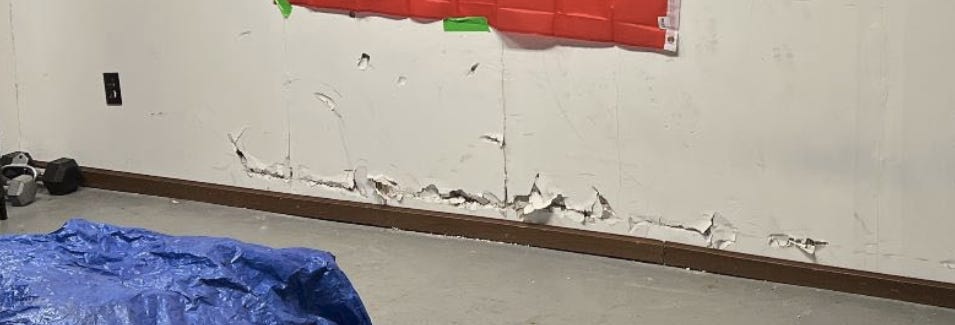What is 'Wear and Tear' at the Landlord Tenant Board?
Unexplained rules in the RTA and at the LTB lead to a ton of confusion. How does a small landlord in crisis navigate these concepts?
I came across an article in The Spec about a landlord who failed to evict a tenant at the Ontario Landlord and Tenant Board (LTB) for undue damage to the unit. As often is the case with reportage, it’s light on the details. The adjudicator, James Campbell, described the damage as “worn walls, scuff marks and the odd broken trim, here and there.” Worse still, I haven’t seen the evidence or spoken to the landlord here. But, the dispute revolved around the twin concepts of “normal wear and tear,” and conversely, “undue” damage. If you search online to understand what either of these looks like specifically, you won’t get an an answer. To my mind, it makes sense that something like this stay undefined in the hopes that reasonable people would find ways to resolve disputes. But, to a landlord facing all the myriad ways that their property can be damaged, clarity is sorely needed on this topic.
But, what does hit home in this scenario is the landlord’s “bid to evict” for damages. In my own experience, the process was incredibly nebulous and abundantly confusing. I still don’t have a clear answer as far as what constitutes undue damage. Also, in Ontario, it is not legal to charge damage deposits at the beginning of a tenancy. So, all accountability for destruction in our province is done after the fact, if at all.
My experience with tenant damage related to basement walls. The tenant had created holes in one existing walls with what looked like a hammer or some other implement. The hole was big enough that I thought it warranted the “undue” tag:
In addition, one of the tenants had admitted to skateboarding in the area. Based on the damage, this sort of activity must have been incredibly aggressive. I also considered this form of damage to be an “undue” level:
I tell you all of this to point out that, at the time, I was creating what would become an L2 file at the LTB, I’d needed to understand the key concepts behind this with enough clarity to know I was on the right track. Basic wisdom says I would have been better served by a paralegal, and I eventually did find one. But, at this time, I filed this application alone.
This all starts from the N5 form and checking the box that says: Reason 2: You or someone visiting or living with you has willfully or negligently damaged the rental unit or the residential complex.
To back up the fact that this constituted “undue” damage, I knew that finding a comparable case that had been heard with similar circumstances (called case law) might help me show that this was, in fact, undue damage. For that I referred to Doucette-Grasby v Lacey, 2013 – Ontario Claim No. SC-2372/12. I even reasoned that “The judge finds “that the small gash in the kitchen counter is undue damage.” – given this smaller damage, the damage at [my unit] would fall under “undue.” It was a heck of a lot of work on my part that was never even seen by the adjudicator because the undue nature of the damage was in no dispute.
At the time I also thought that this might, or could win me an eviction. But, as it turns out, the Residential Tenancies Act c. 17, s. 34 is pretty clear that undue damages are to be repaired and are the responsibility of the tenant.
Tenant’s responsibility for repair of damage
34 - The tenant is responsible for the repair of undue damage to the rental unit or residential complex caused by the wilful or negligent conduct of the tenant, another occupant of the rental unit or a person permitted in the residential complex by the tenant. 2006, c. 17, s. 34.
This does not indicate eviction, and given that the LTB treats eviction as a last resort, it would be difficult to take a damage claim (without any other reasons) all the way to an eviction. In my case, my tenant was ordered to repair the damage. The adjudicator provided no details in terms of what level of repair. The adjudicator also granted a section 78 stipulation; which indicates that if repairs weren’t done, I could evict. The tenant eventually repaired the damage badly and late, so I filed what’s called an ex parte eviction notice (L4) and that also went to hearing. The result was no eviction.
I say all this to point out how incredibly difficult it is for small landlords to hold tenants accountable for damages. With the same tenant and another set of damage totaling $10,000, I would again hold my tenants accountable, but recover a mere $900 of that. The tenant would go on to burn my house down. That damage was worthy of an eviction.
Please forward this newsletter to someone you think might find this of value. If you have something you’d like me to cover, let me now. Click below to subscribe (if viewing this on the web). Thank you again for reading.



